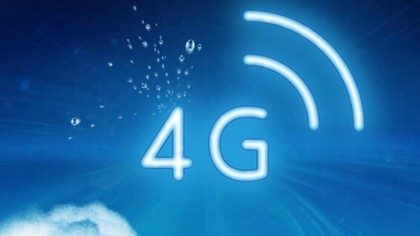India has the slowest 4G LTE speeds in the world
India may be slow because of its network congestion but has 86.26% availability

India ranked last out of the 88 countries that were on the list with an average 4G LTE speed of 6.07 mbps. Though disappointing, it’s an improvement from last year’s report where India’s average speed was 5.14 mbps with 81.56% coverage.
OpenSignal reported that network congestion was the primary reason behind India’s under performing speeds.
While having 86.26% coverage of 4G, the country somehow still manages to have the slowest speeds in the world as per OpenSignal’s State of LTE 2018 report.
Globally, 4G LTE speeds have stagnated at approximately 45 mbps with the overall global average at 16.9 mbps, which is an improvement over last year’s average of 16.6 mbps.
Availability of 4G signals
Availability of 4G signals, is measured by how consistently accessible 4G networks are in each country in OpenSignal's report. Rather than focusing of geographic coverage, the company focused on the proportion of time that the users have access to a particular network.
In the current report, India was ranked fourteenth in terms of available of 4G signals. Although it was an increase in absolute coverage from last year, the country's rank slipped three places (down from being eleventh in 2017).
Growth in availability has been attributed to Reliance Jio making 4G services more accessible and contributing towards the telecom boom.
Sign up for breaking news, reviews, opinion, top tech deals, and more.
4G speed
Countries like India and Thailand, though providing far-reaching access to LTE signals, lack the capacity to deliver speeds that are any higher than 3G networks.
Most of the countries that have speeds greater than the global average of 16.9 mbps are small European nations with small populations. The bottom half of the ranking in OpenSignal’s report mostly include nations that have large populations and thus, bigger mobile subscriber bases. This includes India, Indonesia and even the United States of America.
Speed depends on a myriad of factors such as how much of the spectrum is actually devoted to LTE, whether new 4G technologies have been employed, how dense a particular network is and how much congestion occurs on those networks.
Countries with high speeds are using LTE-Advanced networks combined with greater proportion of LTE-Advanced capable devices.
India is all set to launch 5G by 2020. This next generation of connectivity is going to be even faster leaving each every successive generation of smartphones obsolete. Since change is the only constant, at least we’re headed in the right direction.
Prabhjote Gill is the Senior Journalist at Business Insider India. She covering everything space, tech and defence at Business Insider India. She is also in-charge of allocating stories to junior writers.